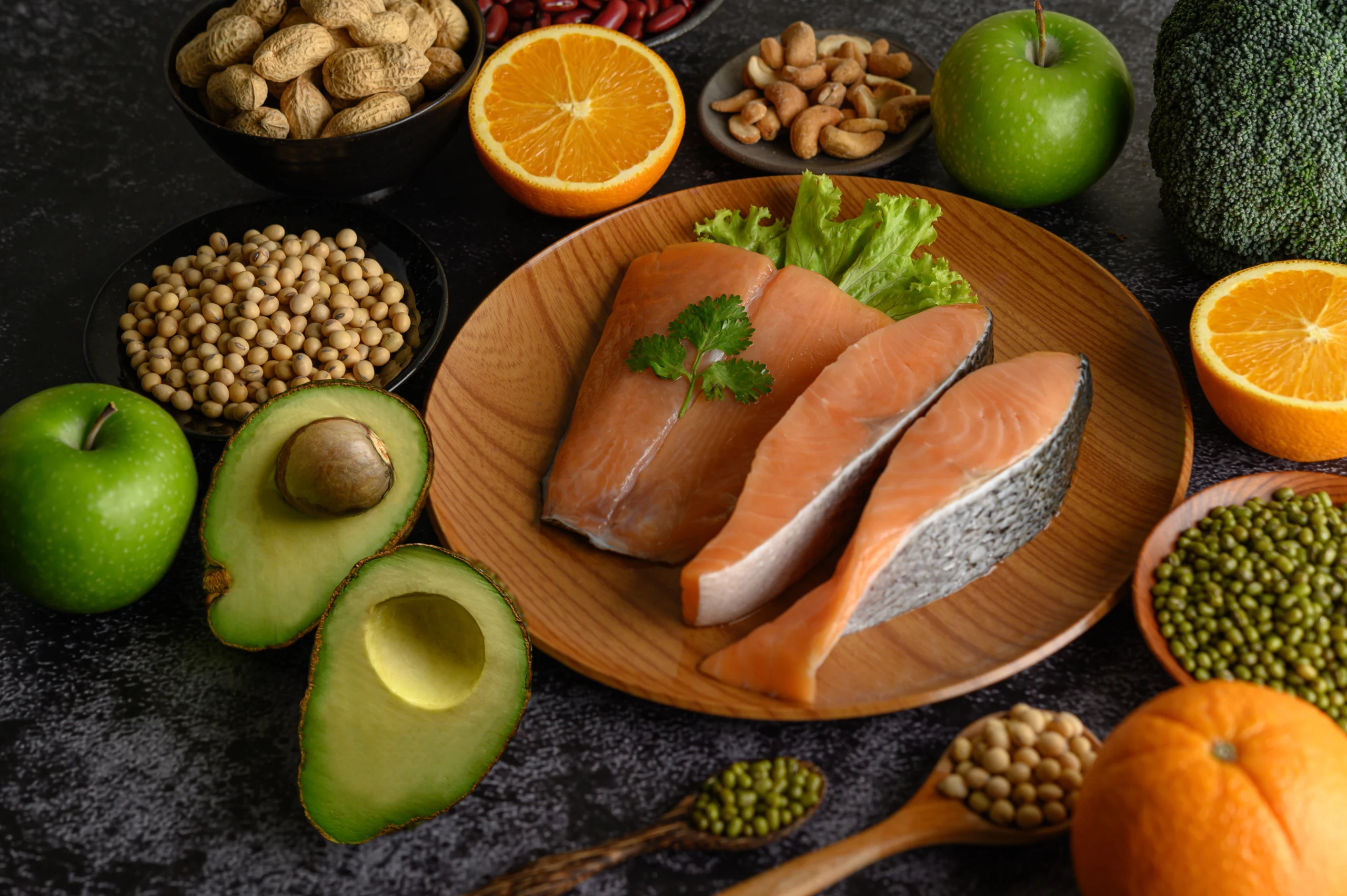When it comes to fueling your body, few nutrients are as essential as protein. Whether you’re looking to build muscle, stay energized throughout the day, or simply adopt healthier eating habits, including high-protein foods in your diet is a game-changer. But with so many options available, figuring out what to eat—and why—can feel overwhelming.
In this guide, you’ll discover the best high-protein foods, how they benefit your body, and practical ways to include them in your meals. By the time you’re done reading, you’ll have a clear path to nourishing your body with confidence.
Table of Contents
Why Protein is Essential for Your Body
The Role of Protein in Your Health
Protein isn’t just for bodybuilders; it’s the building block of life. Your muscles, skin, hair, and even your immune system rely on it for repair and maintenance. Protein helps regulate hormones, provides energy, and keeps you feeling full longer—making it ideal for weight management.
Without enough protein, you may feel fatigued, lose muscle mass, or experience slower recovery from injuries. Simply put, it’s a nutrient you can’t afford to neglect.
How Much Protein Do You Really Need?
Your protein needs depend on your lifestyle, activity level, and goals. For most sedentary adults, 0.8 grams of protein per kilogram of body weight is sufficient. If you’re more active or trying to build muscle, aim for 1.2 to 2.0 grams per kilogram.
Here’s a quick breakdown:
| Category | Daily Protein Requirement |
|---|---|
| Sedentary Adults | 0.8g per kg of body weight |
| Athletes | 1.2–2.0g per kg |
| Older Adults | 1.0–1.2g per kg |
To calculate your needs, simply multiply your weight in kilograms by the recommended intake. For example, if you weigh 70 kg, you’ll need around 56 grams of protein per day if you’re sedentary.
Best High-Protein Foods for Every Meal
Animal-Based High-Protein Foods
Animal-based proteins are among the most efficient sources of complete protein, containing all nine essential amino acids.
- Chicken Breast: A staple for many, chicken breast offers 31 grams of protein per 100 grams, making it perfect for muscle repair and growth.
- Fish and Seafood: Options like salmon, tuna, and shrimp are not only rich in protein but also loaded with heart-healthy omega-3 fatty acids.
- Eggs: With 6 grams of protein per egg, this affordable and versatile option is perfect for any meal.
Plant-Based High-Protein Foods
If you’re vegetarian or vegan, don’t worry—there are plenty of plant-based options packed with protein.
- Legumes: Lentils, black beans, and chickpeas are excellent sources, offering around 15–18 grams of protein per cooked cup.
- Tofu and Tempeh: These soy-based products are rich in protein and adapt well to various cuisines.
- Quinoa: Unlike most grains, quinoa is a complete protein, containing all essential amino acids. One cooked cup delivers 8 grams of protein.
- Nuts and Seeds: Almonds, chia seeds, and sunflower seeds are portable and provide a nutrient-rich protein boost.
Dairy-Based High-Protein Foods
For those who tolerate dairy, it’s a protein powerhouse.
- Greek Yogurt: With 10 grams of protein per 100 grams, it’s perfect for breakfast or a snack.
- Cottage Cheese: Low in fat but high in protein, cottage cheese is a satisfying option for weight-conscious individuals.
- Milk: A glass of milk provides 8 grams of protein along with calcium and vitamin D.
Protein-Rich Snacks to Keep You Energized
Sometimes, you just need a quick bite to keep hunger at bay.
- Jerky: Beef or turkey jerky is portable and rich in protein—perfect for busy days.
- Protein Bars: Choose bars with minimal sugar and at least 15 grams of protein.
- Boiled Eggs: Easy to prepare and even easier to eat, boiled eggs are a snack-time winner.
High-Protein Recipes You’ll Love
Adding high-protein foods to your diet doesn’t have to be boring. Try these simple, delicious recipes:
Grilled Chicken Salad
Ingredients:
- 150g chicken breast
- Mixed greens (spinach, arugula, or lettuce)
- Cherry tomatoes
- Cucumber slices
- Olive oil and lemon juice for dressing
Instructions:
- Season the chicken with salt, pepper, and your favorite herbs.
- Grill the chicken until fully cooked, then slice into strips.
- Toss the greens, tomatoes, and cucumber in a bowl.
- Add the chicken on top and drizzle with olive oil and lemon juice.
Protein-Packed Smoothie
Ingredients:
- 1 cup Greek yogurt
- 1 ripe banana
- 1 tbsp peanut butter
- Almond milk (as needed)
Instructions:
- Combine all ingredients in a blender.
- Blend until smooth.
- Enjoy it as a quick breakfast or post-workout snack.
Table of High-Protein Foods (Per 100g)
| Food Item | Protein Content (g) |
|---|---|
| Chicken Breast | 31g |
| Salmon | 25g |
| Lentils | 9g |
| Tofu | 8g |
| Greek Yogurt | 10g |
How to Incorporate More Protein Into Your Diet
Breakfast Ideas
- Start your day with scrambled eggs and spinach.
- Add a scoop of protein powder to your morning smoothie.
Lunch and Dinner Tips
- Replace rice or pasta with quinoa.
- Add grilled chicken or tofu to your salads.
Snack Smarter
- Keep roasted chickpeas or a handful of almonds in your bag for on-the-go snacking.
- Spread peanut butter on apple slices for a balanced treat.
FAQs About High-Protein Foods
1. What are the best high-protein foods for vegetarians?
Great vegetarian options include lentils, tofu, tempeh, quinoa, and Greek yogurt.
2. Can I consume too much protein?
Excessive protein intake can stress your kidneys and lead to dehydration. Balance is key.
3. How can I tell if I’m eating enough protein?
If you feel fatigued, experience muscle loss, or struggle with hunger between meals, you may need to increase your protein intake.
4. What’s the best time to eat protein for muscle gain?
Post-workout meals rich in protein can aid muscle repair and growth.
5. Are protein supplements necessary?
Whole foods should always be your first choice, but supplements can help if you have increased protein needs or limited time.
Conclusion
High-protein foods aren’t just for athletes—they’re for anyone who wants to lead a healthier, more energized life. By including a mix of animal-based, plant-based, and dairy options in your meals, you can easily meet your protein needs without sacrificing flavor or variety.
So, what’s stopping you? Pick a few options from this list, experiment with the recipes, and take the first step toward a more balanced diet. And remember—health is a journey, not a destination

